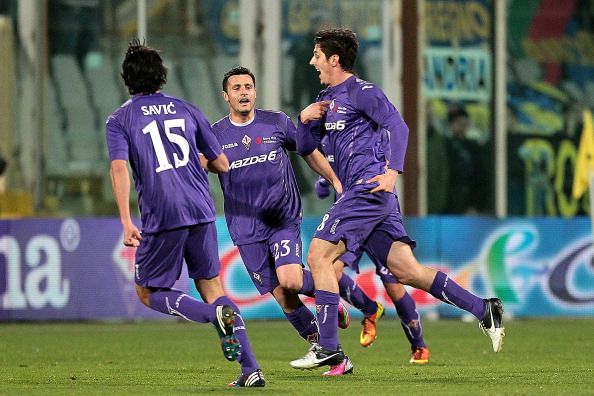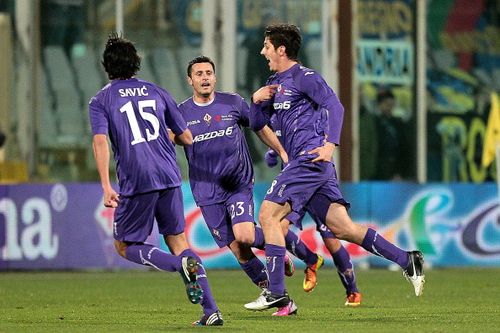
The Viola: A team of the future

ACF Fiorentina, also known as Viola in the Italian peninsula, are trying their level best to redeem their past glories. Currently sitting in sixth, they have 42 points in 25 league outings, and are adrift of a Champions league spot by 2 points. Their current season, if it has to be described in a phrase, can be called “attractive but inconsistent”.
Fiorentina, who lifted the Scudetto on a couple of occasions, and also came runners up on 5 occasions, were once considered strong Champions League contenders, and used to feature on a regular basis in Europe. But after the departure of their head manager Prandelli (who headed for the national team), they saw a dip in form, which resulted in their continued absence from the biggest stage in Europe.
When Fiorentina appointed ex-Italy international, Vicenzo Montella as their manager, it attracted the frowns of many football pundits because of the manager’s lack of experience while managing a big club like Fiorentina (even though he had some coaching experience at the youth level for his ex-club AS Roma). But things began to change for the better. He introduced an attacking brand of football, but unlike Zeman, with much more solidarity at the back.
Montella’s signing of midfielders like Alberto Aquilani, Borja Valero Iglesias, David Pizarro and Matias Fernandez signalled his intentions and liking for creative playmakers in midfield. Further, this also indicated that he wanted to build a team around this quartet. He also wanted to freshen things up, that being evident from the fact that in the current squad of 26 players, 17 are new.
Coming to their current squad, in defence they have the experienced and reliable Manuel Pasquel, and the promising youngster Stefan Savic, who has really picked up his game recently. Moreover, players like Facundo Roncaglia, Nenad Tomovic and Gonzalo Rodríguez might not be great defenders, but are effective in the current set-up.
Their midfield is the most creative in the Serie A, and comprises of Aquilani, Iglesias, Pizarro and Matias Fernandez. One cannot ignore the contribution of players like Migliaccio and Romulo, whose box-to-box running not only adds versatility at the centre of the pitch, but also does not let the opposition run over their defence.

With the Serbian young striker Adem Ljajic coming to life with his brace in the 4-1 mauling of Inter Milan and the presence of Stevan Jovetic alongside him, their attack looks lethal if properly supplied with chances from the midfield. Moreover, with the like of Luca Toni as a substitute, who also offers a plan B with his strong aerial ability, and recent big money purchase Giusseppe Rossi from Villarreal, they have the attacking prowess to dismantle any stubborn defence.
Rossi’s purchase was a gamble taken by Montella, and if it pays off, it can make the Viola a very strong force to reckon with. In a way, it is a signal to the footballing world that the once-giants of Italy are getting up from their slumber and are ready to take on any club at the highest level. Even though they have not been consistent, some good additions in their defence can really put them at par with top clubs.